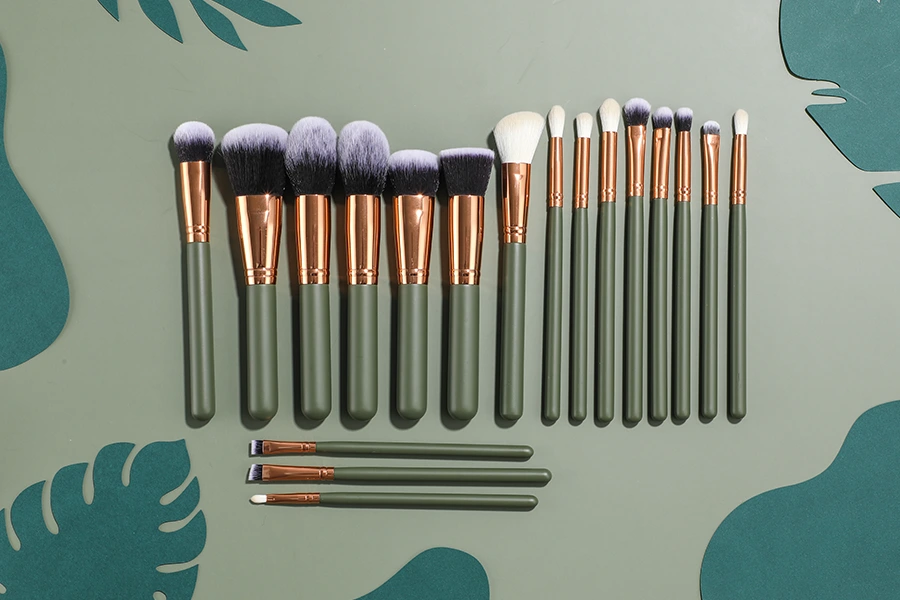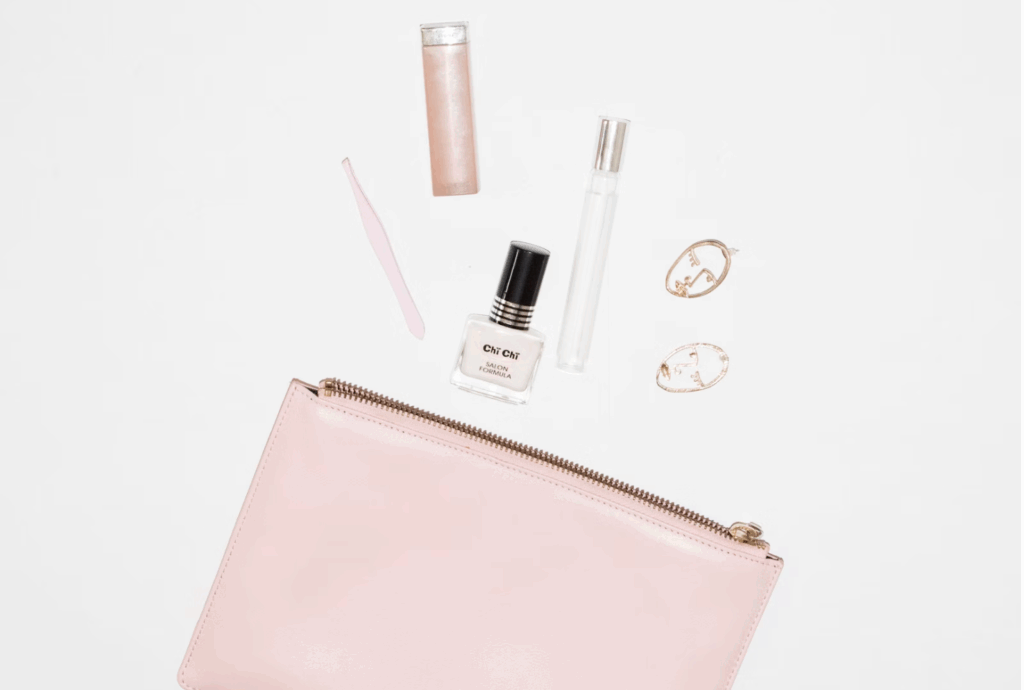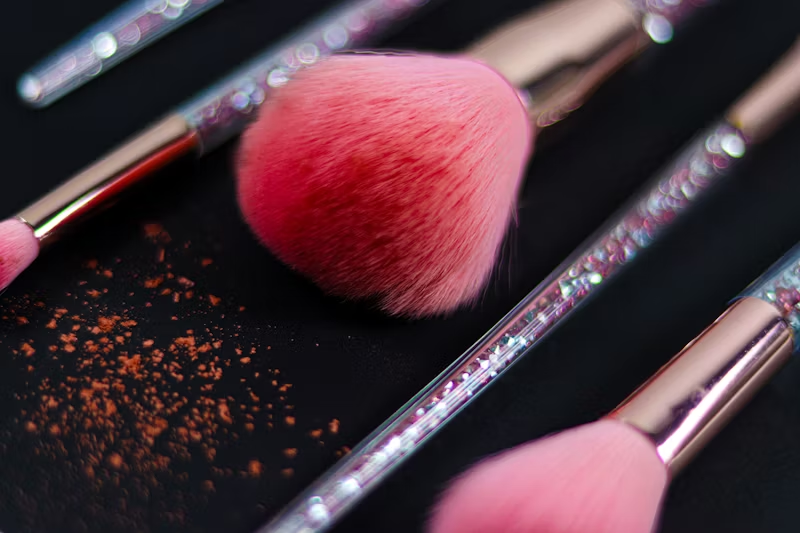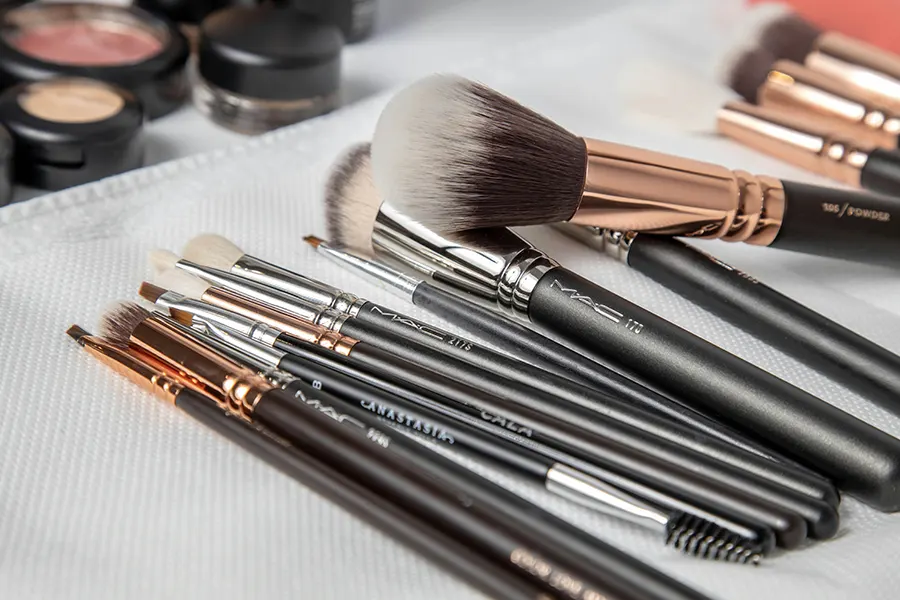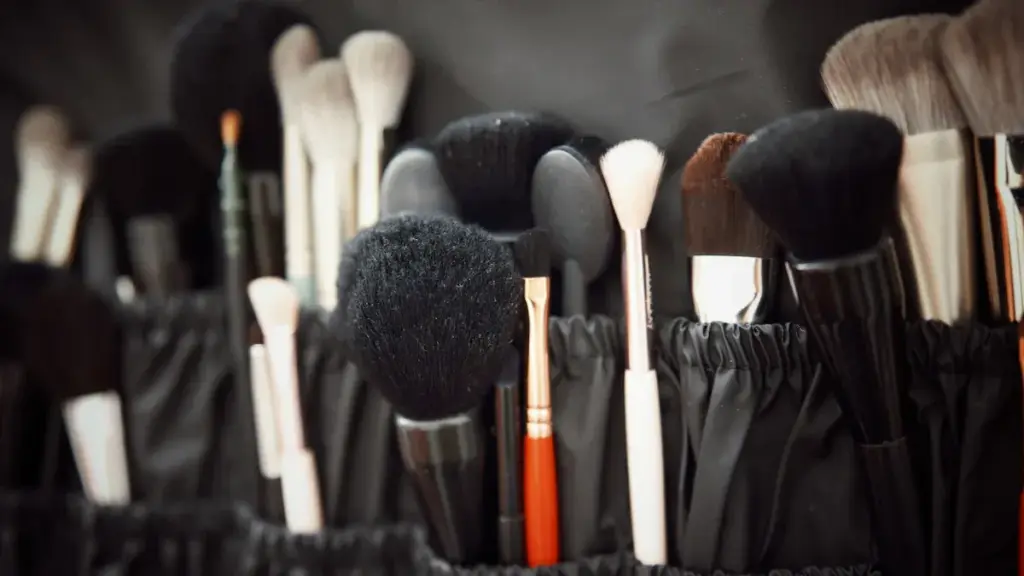Ever found yourself wondering if you could make your own makeup tools? If so, you’re not alone. Many beauty enthusiasts are curious about how to create your own makeup brushes to achieve a truly personalized experience. Crafting custom brushes allows you to tailor every aspect—from bristle type to handle design—ensuring that your tools meet your exact needs. In questa guida, we’ll walk you through the process of designing and making your own brushes, providing you with the knowledge and skills to enhance your beauty routine with a touch of DIY flair.
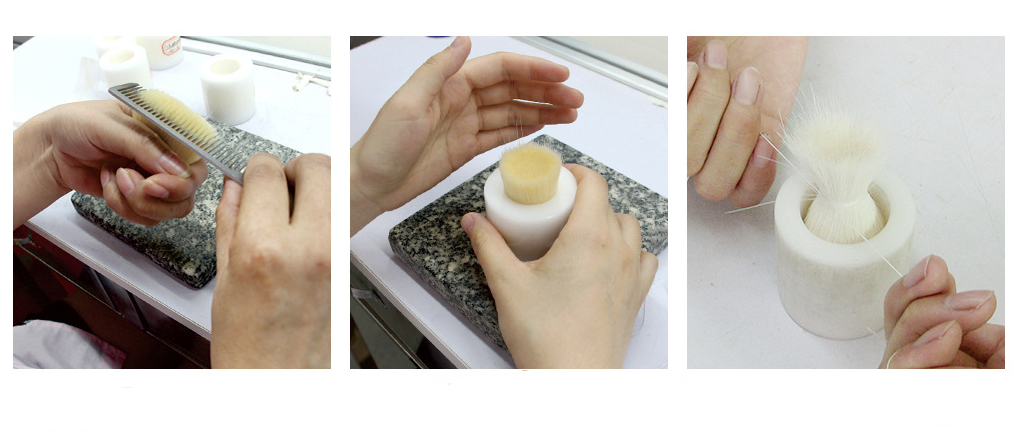
Fare un passo 1: Know the Basics of Makeup Brushes
Before we embark on the exciting journey of creating your own makeup brushes, let’s start with the essentials. In this part, we will tell the basics of brush types, materiali, and bristle properties that will set the stage for crafting tools that are both beautiful and functional.
Overview of Different Types of Makeup Brushes

Imagine each brush as a unique tool in your beauty arsenal. Knowing these types will guide you in selecting the right shapes for your custom creations.
- Foundation brushes, with their flat, dense bristles, are perfect for achieving a flawless base.
- Blush brushes, with their rounded shape, help you create that perfect flush of color.
- Eyeshadow brushes range from small, precise designs for detailed work to larger, fluffier options for blending.
Materials Used in Makeup Brush Construction: Setole, Maniglie, and Ferrules

Let’s dive into the materials that make up your brushes.
- Setole can be natural, like soft squirrel or goat hair, or synthetic, such as durable nylon. Each type has its own charm: natural bristles are great for picking up pigment, while synthetics are easy to clean and perfect for creamy products.
- Maniglie can be made from wood, plastica, or metal, each offering a unique feel and look.
- The ferrule, that crucial metal band, holds everything together—usually crafted from aluminum or brass.
The Role of Bristle Density and Shape in Makeup Application

Think of bristle density and shape as the brush’s personality. Getting these details right will ensure your brush performs just as you envision.
- Dense bristles give you control and full coverage, ideal for foundation. Less dense bristles provide a softer touch, perfect for blending and diffusing.
- The shape—whether round, Piatto, or angled—determines how the brush interacts with your makeup and skin. Per esempio, a round brush is fantastic for blending, while a flat one excels at applying eyeshad.
Fare un passo 2: Gather Materials and Tools
Now that you have the basics down, it’s time to gather your materials and tools. Each component is essential in creating a brush that’s both functional and beautiful. Let’s explore what you’ll need and why.
Setole: Natural vs. Sintetico
Setole naturali, like those from a squirrel or goat hair, are wonderfully soft and hold pigment beautifully. Setole sintetiche, similar to eco brushes, often made from nylon, are more resilient and perfect for liquid and cream products. If you’re after a brush that’s easy to maintain and long-lasting, synthetic might be your go-to. For a brush that feels luxurious and performs well with powders, consider natural bristles.
Gestire il materiale: Legna, Plastica, or Metal
Think about what feels right in your hand and what fits your aesthetic. Wooden handles offer a classic, comfortable grip and a touch of elegance, but they require a bit more care. Plastic handles are lightweight and cost-effective, while metal handles, like those made from aluminum or brass, bring a modern, durable touch.
Ghiera: Metal Types
The ferrule, often overlooked, is crucial for keeping the bristles in place. Aluminum ferrules are light and resist corrosion, making them a practical choice. Brass ferrules, though heavier, offer a solid, luxurious feel.
Tools You’ll Need: Glue, Clamps, and More
To assemble your brush, you’ll need some essential tools. Strong adhesive is a must for securing the bristles to the ferrule. Clamps help hold everything in place while the glue sets. You’ll also need cutting tools to shape the bristles. Having these tools ready will streamline your process and ensure everything stays aligned.
Fare un passo 3: Design Makeup Brush
Custom brush design is where your creativity shines. This step is all about deciding the shape, bristle characteristics, and handle design to suit your needs and preferences.
Custom Brush Shape: Round, Flat, Angled, and More
The shape of your brush affects how it performs. You may take some time to decide which shapes will best suit your makeup routine. This step can take about 2 ore, including adjustments and testing.
- Round brushes are versatile and work well for a variety of tasks, from foundation to blending.
- Flat brushes are perfect for precision, like applying eyeliner or concealer.
- Angled brushes offer control and are great for contouring or defining.
Consider Bristle Length and Density for Specific Applications
You may think about what you use most often and how you want your brush to perform, as it affects its length. This step usually takes 1-2 hours to ensure you get the bristle length and density just right.
- Longer bristles provide flexibility, making them great for blending.
- Shorter, denser bristles offer precision and control, ideal for applying foundation or concealer.
Design Handle
Designing the handle is not just about aesthetics but also comfort. Perciò, you should consider the handle’s length, diameter, and texture to ensure it feels good in your hand. A well-designed handle reduces hand fatigue and improves control. Crafting a comfortable and stylish handle takes about 2-3 ore, including any necessary refinements.
Fare un passo 4: Custom Logo and Labeling
A custom logo and label on your makeup brushes personalize them and give them a professional touch. This step involves designing your logo and choosing the best method for applying it to your brushes.
Start by designing a logo that represents your brand or personal style. This design should be simple yet distinctive, as intricate details can be challenging to reproduce on small surfaces. You can use graphic design software or hire a designer to create a logo that fits your vision. Then consider how the logo will look on different materials and scales. Once your design is finalized, you’ll need to choose a method for applying it to your brushes.
Print Logo
Printing is a popular method for applying logos to brush handles or ferrules. This method uses ink or toner to transfer your design onto the surface. There are several printing techniques available:
- Pad Printing: Ideal for small, intricate designs, pad printing uses a silicone pad to transfer ink from a plate to the brush surface. It’s suitable for printing on curved or irregular surfaces.
- Screen Printing: This technique involves pushing ink through a mesh screen onto the brush handle. It’s well-suited for larger designs and can be done in multiple colors.
- Digital Printing: For more detailed and colorful logos, digital printing directly transfers the image from a digital file onto the surface using specialized printers.
Engrave Logo
Engraving offers a more permanent and sophisticated way to add your logo to brush handles or ferrules. This method involves using a laser or rotary tool to etch the design into the surface. Engraving provides a polished and professional look that won’t wear off over time. There are a couple of engraving methods:
- Laser Engraving: A laser engraver burns the design into the surface with precision. It’s suitable for various materials, including metal and wood, and produces clean, detailed results.
- Rotary Engraving: This method uses a rotating bit to carve the design into the material. It’s ideal for creating deeper, more tactile engravings and works well on wood and metal.
Fare un passo 5: Craft the Brush Head
Crafting the brush head is a crucial step that determines the effectiveness and quality of your custom makeup brushes. Here’s how to perfect each aspect of the brush head, ensuring it meets your specific needs and preferences.
Cut and Shape Bristles
Primo, select the length of the bristles based on what you need. Longer bristles are fantastic for blending, while shorter ones offer more control for detailed work. Use sharp scissors or a razor blade to carefully trim the bristles. It’s a bit like sculpting; you want to remove just the right amount to achieve the perfect shape. For a round brush, trim so the ends are rounded and tapered. For a flat brush, ensure the bristles are even across the top. This step can take about 1-2 ore, depending on how precise you want to be and how many brushes you’re working on.
Secure the Bristles to the Ferrule
Start by cleaning the inside of the ferrule to make sure it’s free of any debris. Apply a strong adhesive to the base of the bristles and inside the ferrule. Be generous with the glue but careful not to overdo it, as you don’t want excess adhesive to seep out. Gently insert the bristles into the ferrule, making sure they’re well-aligned. Use clamps to hold everything in place while the glue dries. This process usually takes 1-2 ore, including the drying time. The goal here is to ensure the bristles stay securely in place and don’t shift around.
Making Tips for Different Types of Brush Heads
When crafting brush heads for different makeup applications, the approach changes slightly. Each type of brush head can take about 2-3 ore, including the time to fine-tune and test their performance.
- For foundation brushes, you’ll want to use dense bristles that can provide full coverage. They should be firm enough to apply foundation evenly but still flexible for blending. A flat or slightly rounded shape works best here.
- For blush brushes, the bristles should be softer and rounded to create a natural flush of color. This shape helps blend the blush seamlessly onto the cheeks.
- When it comes to eyeshadow brushes, you have a bit more variety. Small, dense brushes are perfect for precise color application on the lids, while larger, fluffier brushes are ideal for blending and diffusing eyeshadow.
Fare un passo 6: Attach the Brush Handle
Attaching the handle is where your brush starts to come together. This step involves fitting the ferrule to the handle and finalizing the handle’s finish.
Fit the Ferrule to the Handle
You may align the ferrule with the handle and ensure a snug fit. The ferrule should sit securely at the end of the handle without any gaps. This process typically takes about 30 minutes, including checking for proper alignment.
Glue and Clamp the Ferrule to the Handle
You may apply adhesive to the ferrule and fit it onto the handle. Use clamps to keep everything in place while the glue sets. This step ensures a strong bond and a well-constructed brush. Gluing and clamping usually take around 1-2 ore, including the time needed for the adhesive to dry.
Finalize the Handle: Sanding, Sealing, and Finishing
Once the glue has dried, sand the handle to smooth out any rough spots and enhance its grip. Apply a sealant or finish to protect the handle and give it a polished look. This final touch-up process takes about 1-2 ore, ensuring your handle looks and feels great.
Fare un passo 7: Test and Perfect Brushes
Testing and perfecting your brushes is the final step to ensure they meet your expectations and perform flawlessly.
Check for Shed and Bristle Alignment
You may examine your brush for any issues with bristle shedding or alignment. Proper alignment ensures even application, while excessive shedding might indicate a need for stronger adhesive or adjustments. This check typically takes about 30 minutes.
Test Brush Performance with Different Makeup Products
You may try out your brush with various makeup products to assess its performance. Test how well it applies and blends different types of makeup. This evaluation helps identify any areas that might need improvement. Testing usually takes around 1-2 ore.
Make Adjustments: Rifilatura, Tightening, and Refining
Based on your tests, make any necessary adjustments. Trim the bristles for better shape, tighten the ferrule if needed, and refine the handle for improved comfort. Adjustments and refinements ensure your brush performs just as you envisioned and typically take about 1-2 ore.
Conclusione
Whether you’re a makeup aficionado or simply enjoy a creative project, learning how to create your own makeup brushes can be fulfilling and practical. By following these steps, you can craft brushes that perfectly suit your needs and preferences, elevating your beauty routine with personalized tools. From selecting materials to perfecting the final product, the process is an opportunity to blend artistry with functionality. Embrace the DIY approach and enjoy the satisfaction of using brushes that are uniquely your own.












